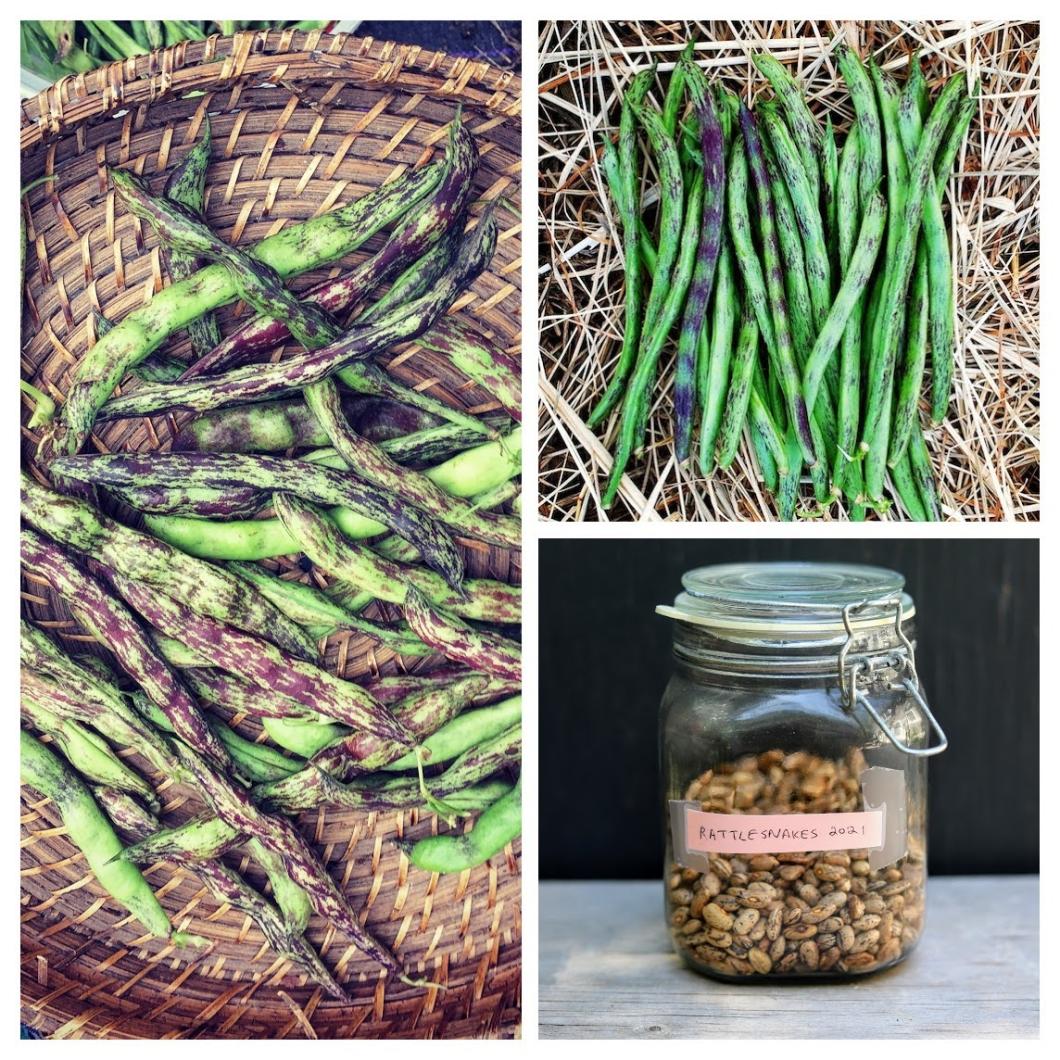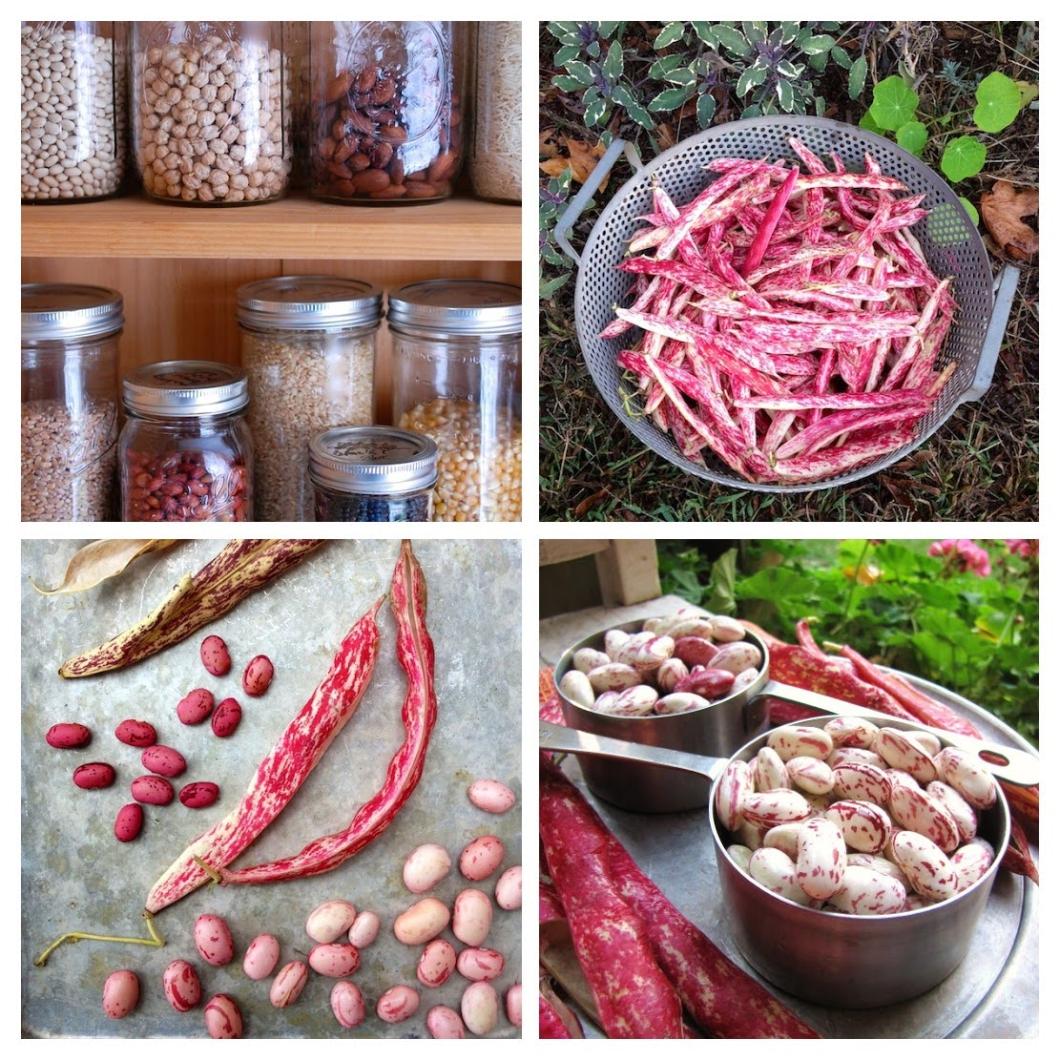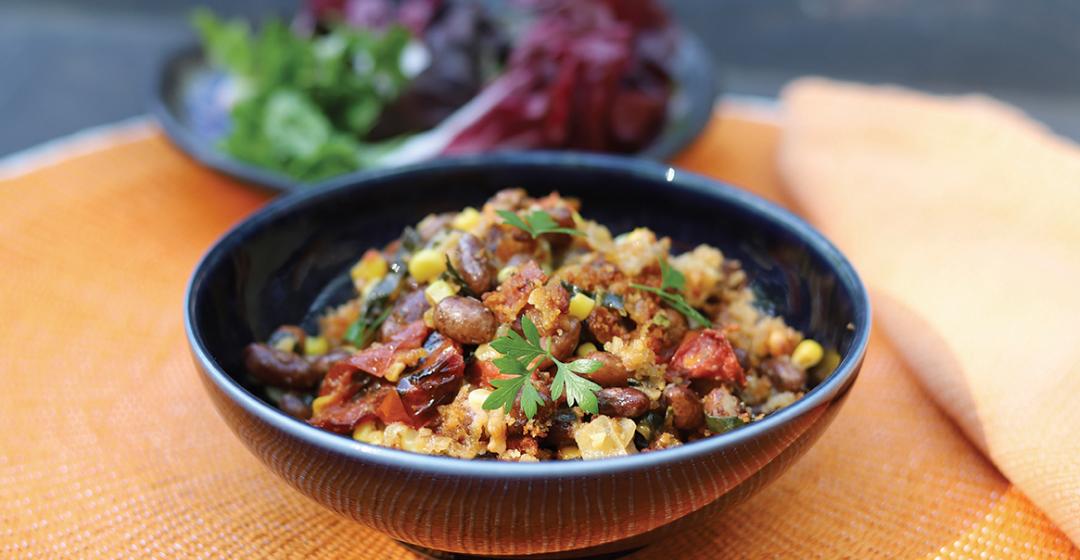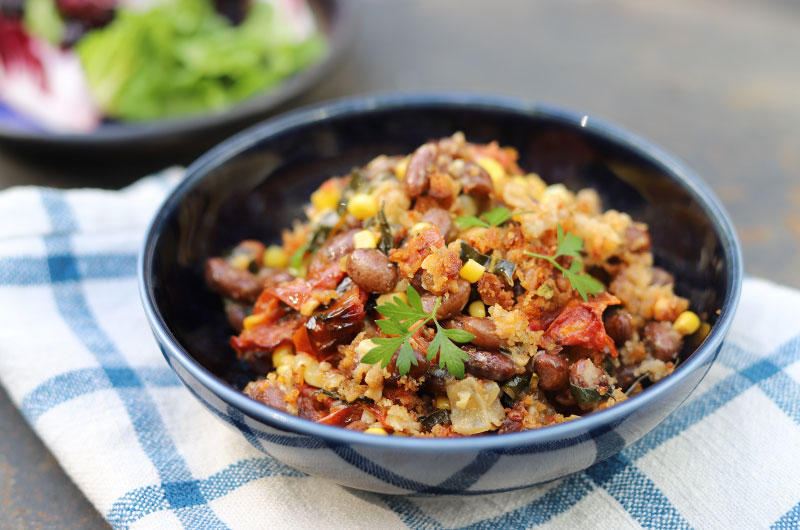Shell beans and I go way back – back to the days when my grandmother Honey “put up” (blanched and froze) quarts and quarts of pole lima beans. Something about the sandy soil and the long, hot summers made Delaware an ideal spot to grow limas; we always had them with corn cut off the cob in a succotash with only three other ingredients: butter, salt, and high-fat heavy cream. Oh, and lots of pepper. To this day, my sister and I are the only people I know who actually like lima beans.
This year in my Vineyard garden, after years of successfully growing and drying Rattlesnake and Cranberry beans (this is not rocket science), I stubbornly decided to plant a few Christmas (a.k.a. speckled) limas. I’m still waiting for them to mature, so we’ll see.
In the meantime, I’m waging a PR campaign for all shell beans, and I’ll tell you why.
First, I should clarify that a shell bean is any bean you grow primarily for eating the seeds, not the pods – though many bean varieties do double duty. We eat young Rattlesnake beans from mid-summer through fall as our house green beans. They have a deeply bean-y flavor that’s hard to beat. I always plant too many seeds, because I know each one doesn’t take up much space horizontally. The vines grow (and grow) vertically – they are “pole” beans as opposed to “bush” beans – so I squeeze a lot of them along the back fence of my garden. Last year I also planted them along the front fence, which faces south, and they wove a wall of leaves that blocked the sun from reaching my zinnias. Not smart on my part, but the zinnias compensated by growing six feet tall.

By October, I can’t keep up with picking the beans (the plants are still flowering and producing beans repeatedly here with our warm fall weather) so I begin to let many of the pods mature. Then on a cool November morning we finally harvest all the brown swollen pods and sit on the deck and pop the seeds out. It’s a fun ritual. I spread them out on sheet pans to dry out completely. This doesn’t take more than about a week or ten days; you’ll know they’re dry when they feel hard, are shrunken, and the color darkens. At that point, pop them in glass jars to store.
The best part is that we get to eat the beans over the winter (if they last that long). Rattlesnakes have an alluring smoky, earthy flavor, and the texture of the dried bean brought back to life with a gentle simmer is firm and creamy, making them an outstanding ingredient in everything from gratins (like this Harvest Gratin with Bacon, Shell Beans, and Roasted Tomatoes) and warm salads to ragouts and rice dishes.
There’s no way to get this kind of texture from a canned bean. If you don’t grow your own shell beans, I highly recommend mail ordering specialty beans from Rancho Gordo or another bean grower and stocking up on dried black beans and white beans from the grocery store. Of course, you (and I) can still rely on canned beans for tacos and quick weeknight dishes, but a little extra time to cook your own beans is worth it on occasion.

A main selling point of my campaign is the opportunity to eat shell beans fresh, before they are dried. In my opinion, the best bean to grow for this opportunity is the Cranberry bean (and its cousin the Italian Borlotti bean). The colorful pink pods of this bush-type bean are a beautiful addition to your garden, but the plump white and pink speckled seeds inside are a creamy treat, cooked just until tender (about twenty minutes, depending on just how fresh they are) and served warm dressed with grassy olive oil, lemon, and sea salt. (Okay garlic, too, and maybe on a bed of arugula). The texture is so wonderful – and the nutty flavor so delicious – that you begin to understand how a freshly cooked shell bean can engender so much good will.
Fava beans are an excellent example of this too. In fact, the unique nutty flavor of a fresh fava bean gets lost when dried. But growing fava beans, while fun (the black and white flowers are pretty too), is not as rewarding for a home gardener interested in actually harvesting and storing a decent amount of beans, as yields are relatively low.
Now for the final push in my promotion. You probably already know from the nifty marketing gurus that beans are a protein- and folate-packed nutritional powerhouse. Some folks are trying to market them as meat substitutes, but I think that’s unnecessary and a bit demeaning. Next someone will be labeling them “plant-based.” Huh? They’re plants; they taste good; they’re good for you; they’re affordable; and they’re incredibly versatile in the kitchen. I say put them at the center of the plate and don’t apologize for it! Try this Harvest Shell Bean Gratin with Bacon, Corn, and Roasted Tomatoes and you’ll know what I mean. And, of course, you can make it without the bacon – the meat is just a bit player.








